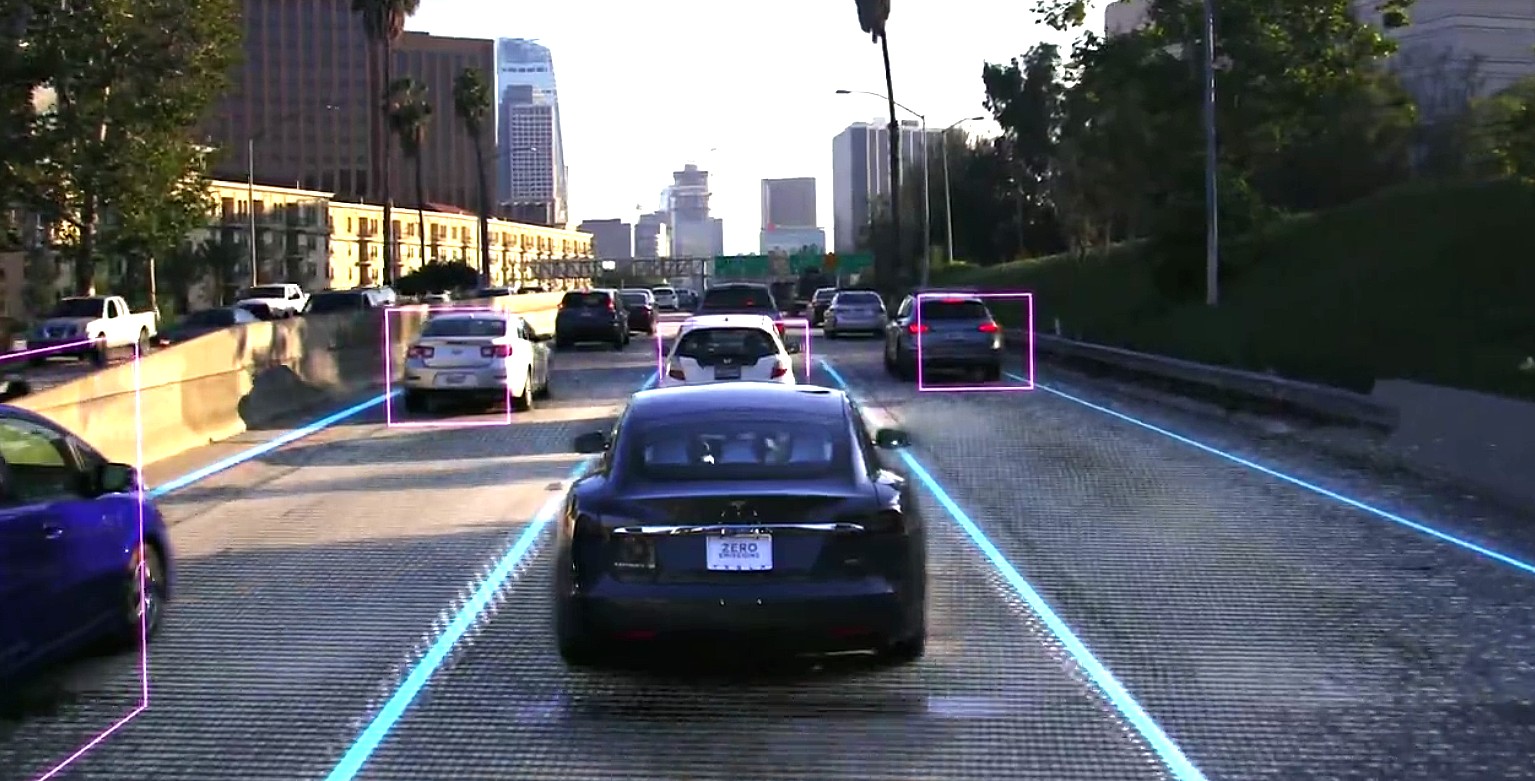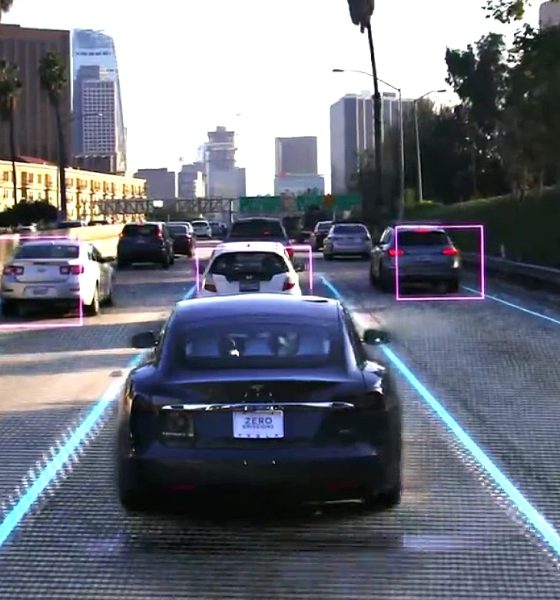

Investor's Corner
Tesla’s Robotaxi service will be an inevitable player in the autonomous taxi race
Elon Musk envisions the Tesla Network to be comprised of full self-driving vehicles being used as a ride-hailing service. During Tesla’s Autonomy Day presentation last month, Musk mentioned that owners operating their vehicles as part of the Tesla Network’s “Robotaxi” service could earn as much as $30,000 per year. Musk has set his sights on the autonomous mobility-as-a-service (MaaS) market, and during a call following Tesla’s announcement of a capital raise, the CEO noted that Robotaxis could ultimately push the company towards a market cap of $500 billion.
While Musk’s Robotaxi concept has been dismissed (and to a point, even mocked) by Tesla skeptics, the era of autonomous ride-hailing services appears all but certain nonetheless. As early as 2014, former Uber CEO Travis Kalanick was predicting that the ride-hailing industry will eventually shift to self-driving cars. Speaking at the 2014 Code Conference, the Uber CEO stated that “This (autonomous vehicles) is the way the world is going. If Uber doesn’t go there, it’s not going to exist either way. The world isn’t always great,” he said, admitting that Uber’s own drivers will likely lose their work as a result of the self-driving revolution.
These points were recently echoed by Amnon Shashua, who is currently serving as senior vice president at Intel and CEO of Mobileye, Tesla’s former partner for its Autopilot hardware. At a recent sit-down interview with CNBC‘s Jon Fortt, the Mobileye CEO noted that robotaxis would indeed be a game-changing element in the transportation industry. Shashua also stated that by simply removing human drivers from the equation, ride-hailing companies would immediately see significant savings.
“What is really the game-changing element is going from a human-driven ride-hailing service to a robotaxi service. Where the driver today is 80% of the economics. Once you remove the driver and you replace it with CapEx — the cost of the car, the cost of the technology, and you can, you can have the cost of technology for a few tens of thousands of dollars. It is game-changing in terms of the discount that you can provide on the current ride-hailing business, 40% to 50% discount on the existing ride-hailing service, and still make a viable business; viable in terms of high profitability,” Shashua said.
Based on Tesla’s plan for its Full Self-Driving suite, the electric car maker is already pursuing these cost savings well before launching its Robotaxi service. Musk estimates that Tesla can run a Robotaxi service for around $0.18 per mile, thanks in part to the advantages that come with all-electric vehicles, such as little maintenance and no fuel costs. Tesla’s Full Self-Driving computer, which was developed in-house and tuned specifically for the company’s vehicles, is also expected to be cheaper than comparable components from chipmakers such as Nvidia. ARK Invest analyst James Wang, who used to work for Nvidia, noted that Tesla’s FSD computer effectively puts the electric car maker around four years ahead of rival automakers in the self-driving race.
Based on the comments from the Mobileye CEO, the previous predictions of the former Uber CEO, and the recent statements from Elon Musk, it appears that the transportation sector is indeed heading towards the autonomous driving era. Whether Tesla can indeed leapfrog the competition and the industry’s biggest players like Waymo and GM Cruise is still up for question, but the arrival of full self-driving vehicles, as well as their use for ride-hailing, seems to be all but inevitable. Thus, however implausible it might seem today, Elon Musk’s vision for the Tesla Network’s Robotaxis will most definitely come true. The network might be deployed later than expected considering Musk’s tendency to be optimistic with his timeframes, but the service will likely be rolled out sooner rather than later.

Investor's Corner
Tesla stock closes at all-time high on heels of Robotaxi progress

Tesla stock (NASDAQ: TSLA) closed at an all-time high on Tuesday, jumping over 3 percent during the day and finishing at $489.88.
The price beats the previous record close, which was $479.86.
Shares have had a crazy year, dipping more than 40 percent from the start of the year. The stock then started to recover once again around late April, when its price started to climb back up from the low $200 level.
This week, Tesla started to climb toward its highest levels ever, as it was revealed on Sunday that the company was testing driverless Robotaxis in Austin. The spike in value pushed the company’s valuation to $1.63 trillion.
Tesla Robotaxi goes driverless as Musk confirms Safety Monitor removal testing
It is the seventh-most valuable company on the market currently, trailing Nvidia, Apple, Alphabet (Google), Microsoft, Amazon, and Meta.
Shares closed up $14.57 today, up over 3 percent.
The stock has gone through a lot this year, as previously mentioned. Shares tumbled in Q1 due to CEO Elon Musk’s involvement with the Department of Government Efficiency (DOGE), which pulled his attention away from his companies and left a major overhang on their valuations.
However, things started to rebound halfway through the year, and as the government started to phase out the $7,500 tax credit, demand spiked as consumers tried to take advantage of it.
Q3 deliveries were the highest in company history, and Tesla responded to the loss of the tax credit with the launch of the Model 3 and Model Y Standard.
Additionally, analysts have announced high expectations this week for the company on Wall Street as Robotaxi continues to be the focus. With autonomy within Tesla’s sights, things are moving in the direction of Robotaxi being a major catalyst for growth on the Street in the coming year.
Elon Musk
Tesla needs to come through on this one Robotaxi metric, analyst says
“We think the key focus from here will be how fast Tesla can scale driverless operations (including if Tesla’s approach to software/hardware allows it to scale significantly faster than competitors, as the company has argued), and on profitability.”

Tesla needs to come through on this one Robotaxi metric, Mark Delaney of Goldman Sachs says.
Tesla is in the process of rolling out its Robotaxi platform to areas outside of Austin and the California Bay Area. It has plans to launch in five additional cities, including Houston, Dallas, Miami, Las Vegas, and Phoenix.
However, the company’s expansion is not what the focus needs to be, according to Delaney. It’s the speed of deployment.
The analyst said:
“We think the key focus from here will be how fast Tesla can scale driverless operations (including if Tesla’s approach to software/hardware allows it to scale significantly faster than competitors, as the company has argued), and on profitability.”
Profitability will come as the Robotaxi fleet expands. Making that money will be dependent on when Tesla can initiate rides in more areas, giving more customers access to the program.
There are some additional things that the company needs to make happen ahead of the major Robotaxi expansion, one of those things is launching driverless rides in Austin, the first city in which it launched the program.
This week, Tesla started testing driverless Robotaxi rides in Austin, as two different Model Y units were spotted with no occupants, a huge step in the company’s plans for the ride-sharing platform.
Tesla Robotaxi goes driverless as Musk confirms Safety Monitor removal testing
CEO Elon Musk has been hoping to remove Safety Monitors from Robotaxis in Austin for several months, first mentioning the plan to have them out by the end of 2025 in September. He confirmed on Sunday that Tesla had officially removed vehicle occupants and started testing truly unsupervised rides.
Although Safety Monitors in Austin have been sitting in the passenger’s seat, they have still had the ability to override things in case of an emergency. After all, the ultimate goal was safety and avoiding any accidents or injuries.
Goldman Sachs reiterated its ‘Neutral’ rating and its $400 price target. Delaney said, “Tesla is making progress with its autonomous technology,” and recent developments make it evident that this is true.
Investor's Corner
Tesla gets bold Robotaxi prediction from Wall Street firm
Last week, Andrew Percoco took over Tesla analysis for Morgan Stanley from Adam Jonas, who covered the stock for years. Percoco seems to be less optimistic and bullish on Tesla shares, while still being fair and balanced in his analysis.

Tesla (NASDAQ: TSLA) received a bold Robotaxi prediction from Morgan Stanley, which anticipates a dramatic increase in the size of the company’s autonomous ride-hailing suite in the coming years.
Last week, Andrew Percoco took over Tesla analysis for Morgan Stanley from Adam Jonas, who covered the stock for years. Percoco seems to be less optimistic and bullish on Tesla shares, while still being fair and balanced in his analysis.
Percoco dug into the Robotaxi fleet and its expansion in the coming years in his latest note, released on Tuesday. The firm expects Tesla to increase the Robotaxi fleet size to 1,000 vehicles in 2026. However, that’s small-scale compared to what they expect from Tesla in a decade.
Tesla expands Robotaxi app access once again, this time on a global scale
By 2035, Morgan Stanley believes there will be one million Robotaxis on the road across multiple cities, a major jump and a considerable fleet size. We assume this means the fleet of vehicles Tesla will operate internally, and not including passenger-owned vehicles that could be added through software updates.
He also listed three specific catalysts that investors should pay attention to, as these will represent the company being on track to achieve its Robotaxi dreams:
- Opening Robotaxi to the public without a Safety Monitor. Timing is unclear, but it appears that Tesla is getting closer by the day.
- Improvement in safety metrics without the Safety Monitor. Tesla’s ability to improve its safety metrics as it scales miles driven without the Safety Monitor is imperative as it looks to scale in new states and cities in 2026.
- Cybercab start of production, targeted for April 2026. Tesla’s Cybercab is a purpose-built vehicle (no steering wheel or pedals, only two seats) that is expected to be produced through its state-of-the-art unboxed manufacturing process, offering further cost reductions and thus accelerating adoption over time.
Robotaxi stands to be one of Tesla’s most significant revenue contributors, especially as the company plans to continue expanding its ride-hailing service across the world in the coming years.
Its current deployment strategy is controlled and conservative to avoid any drastic and potentially program-ruining incidents.
So far, the program, which is active in Austin and the California Bay Area, has been widely successful.








